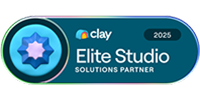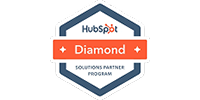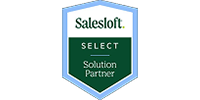The Fortune 10 Playbook: Your Plan for Q3
With the world greatly impacted by COVID-19, organizations that sell into enterprises must pivot their strategies to weather this storm if they’re to have any chance of closing net-new business once Q3 begins.
For companies that have relied heavily on outside sales teams to drive revenues, this period of social distancing is even more problematic, as their salespeople cannot engage with prospects face-to-face at their place of business or trade shows. An account-level approach that targets the most lucrative brands could make a world of difference by standing out from the competition and succeeding when this pandemic eventually dissipates.
In another account-based research (ABR) blog, we highlighted the benefits that account-level insights can have on targeting Fortune 500 enterprises from a sales perspective. We analyzed Walmart, AT&T, and CVS Health to discover what these organizations are focusing on to grow their businesses, optimize efficiency, and improve the customer experience. But these initial insights were just the tip of the iceberg for what these three organizations plan to accomplish moving forward, not to mention there are seven other companies that make up the illustrious Fortune 10.
Your sales and marketing teams may be struggling to penetrate these 10 enterprises during the current business landscape, but don’t miss out on an opportunity to prepare them for a market rebound in Q3. Let’s uncover how your solutions, products, and services can potentially be the missing link in helping the Fortune 10 accomplish their unique corporate goals and technology objectives.
1.Walmart
In fiscal year 2020, Walmart generated $524 billion in revenue, an increase of $9.6 billion from the previous year. One of the company’s highlights in 2020 was the appointment of Suresh Kumar as new Chief Technology Officer and Chief Development Officer. Kumar joined the retailer after a short stint at Google, where he served as Vice President and General Manager of Display+Video ads, Apps, and Analytics. He’s leading Walmart’s charge to digitally transform the retailer through cloud computing, machine learning, and e-commerce solutions to improve both the customer and employee experience.
Walmart Labs will play a crucial role in supporting these technology-based objectives. This operating unit has more than 5,000 data scientists, designers, product managers, and software engineers who are dedicated to reshaping the retailer’s operations. Walmart Labs is focused on:
- Leveraging market-leading public, private, and hybrid cloud environments.
- Transforming Walmart’s hundreds of distribution and fulfillment centers by implementing more scalable technologies.
- Incorporating inventory replenishment and fulfillment technology into online and in-store settings to refine the merchant experience.
2. ExxonMobil
During the company’s 2019 fiscal year, ExxonMobil generated nearly $265 billion in revenues, down from the $290.2 billion earned in the previous year. Given the company’s vast data network, ExxonMobil depends greatly on real-time insights across its manufacturing sites, and in the company’s latest annual report, plans were laid out to connect all global manufacturing sites to a data lake by the start of 2020.
More recently, ExxonMobil announced plans in March 2020 to invest between $30-$35 billion in annual capital expenditures through 2025 to drive corporate growth. Some notable initiatives within these extensive expenditures include:
- New technology investments to help reduce emissions across the industrial, power generation, and commercial transportation sectors. ExxonMobil is focusing on developing lower-emission carbonate fuel cells and carbon capture and energy storage. Part of this objective includes an extended partnership with the Massachusetts Institute of Technology Energy Initiative (MITEI).
- Cost and performance improvements in the Permian Basin through integrated infrastructure expansion efforts spanning the company’s petrochemical and refineries within the Gulf Coast.
- Achieving greater efficiency, utilization, and integration for ExxonMobil’s downstream operations. In 2019, the company generated earnings of $300 million through this initiative.
- Divesting more hydrocarbon assets to pursue more lucrative projects. The business expects to divest up to $15 billion by 2021, while looking to 2025, the company wants to sell off up to $25 billion of its hydrocarbon assets, particularly in the European, Asian, and African markets.
3. Apple
During its 2019 fiscal year, Apple generated more than $260 billion in revenue, with the iPhone accounting for more than 54% of all sales last year. Although Apple enjoyed a strong 2019, the company’s revenue actually declined slightly from approximately $265.6 billion in fiscal year 2018. Undoubtedly viewed as a powerful consumer brand, thanks to product staples such as the iPhone, iPad, Mac, Apple Watch and, more recently, the AirPods, Apple is focusing on becoming more of a government- and enterprise-level technology provider.
During the company’s Q4 2019 earnings call, Luca Maestri, the company’s Senior Vice President & Chief Financial Officer, highlighted Apple’s work with these types of organizations:
- The U.S. Census Bureau is leveraging iOS devices to reduce operating costs, improve security, and enhance the user experience when collecting data for the 2020 census.
- Apple has penetrated 80 of the world’s 100 largest retailers, and these businesses are using Apple products to modernize their point-of-sale operations and differentiate three customer and employee experiences.
Apple is also investing heavily in environmental initiatives. In April 2019, the business announced that it completed its $2.5 billion Green Bond allocations objective, the most of any U.S. organization. At the time of the press release, the number of Apple suppliers committed to using 100% clean energy reached 44 in total. 2020 marks the year when Apple expects to add an additional 4 gigawatts of renewable energy into its supply chain, building on past corporate projects to implement a closed-loop supply chain that uses only renewable or recycled materials.
4. Berkshire Hathaway
With numerous brands under its investment umbrella, Berkshire Hathaway (Berkshire) is unique compared to other Fortune 10 entities, as the business is strictly a holding company and lets its subsidiaries operate on their own without direct management oversight. Although this structure may make it challenging for sales teams to sell directly to the parent organization, Berkshire does have corporate-wide objectives that it hopes to accomplish that could align with your organization’s portfolio.
In the holding company’s latest annual report, Berkshire detailed comprehensive strategies to mitigate cyber-related risks across all of its entities, which could be even more prevalent during this period of expanded work-from-home policies:
- Berkshire anticipates that denial-of-service attacks, phishing scams, and unauthorized attempts to penetrate companies’ information systems will only intensify moving forward. The organization has made a concerted effort to minimize the reputational, financial, and remediation damages caused by service interruptions and failed technology systems.
- Recently, Berkshire has invested in business continuity and disaster recovery planning objectives to combat these potential risks and disruptions. Given its standing as a holding company that oversees other entities, Berkshire is emphasizing ways to ensure any new technologies developed, adopted, or acquired at every level of these subsidiaries are also safeguarded from future attacks.
- The last piece of Berkshire’s cyber-related security strategy involves minimizing threats across all of its companies’ employee and customer information sources, information technology, and business systems. If any of these points fail, Berkshire faces risks in raising additional capital for future investment opportunities.
5. Amazon
Jeff Bezos didn’t ascend to the richest person in the world by accident. As the company’s logo implies, the business offers customers everything from A to Z, and Amazon’s primary goal is to generate even more sustainable cash flows to accelerate future growth. To accomplish this objective, Bezos and Amazon follow four guiding principles: “customer obsession rather than competitor focus, passion for invention, commitment to operational excellence, and long-term thinking.”
Given the current landscape that has limited people’s ability to freely travel outside for everyday items unless deemed an essential business, Amazon figures to thrive during this period of social distancing, enabling customers to purchase a wide range of products in the comfort of their homes. Such a reality has propelled Amazon’s stock to all-time highs during the COVID-19 outbreak.
In addition to achieving a healthy cash flow by following the company’s guiding principles, Amazon’s long-term growth centers on technology-related investments to manage and expand the company’s vast distribution networks. Amazon’s latest annual report details these IT initiatives, which include:
- Investing in technology, specifically infrastructure-related and Amazon Web Services (AWS) enhancements, to improve the customer experience and achieve operational efficiency across the organization. These AWS-related expenditures will encompass global database, compute, and storage service offerings to both enterprise clients and AWS developers.
- Incorporating applications that reduce processing power and further enhance the customer experience. Some core investments include artificial intelligence, machine learning, and wireless connectivity applications.
- Hiring key positions focused on technology and Amazon content. These employees will include hardware and software engineers, computer scientists and designers, and merchandising staff members.
6. UnitedHealth Group
Digital is the name of the game throughout UnitedHealth Group, which owns the UnitedHealthcare (health coverage and benefits services) and Optum (IT-based health services) brands. During the organization’s Q4 earnings call, UnitedHealthcare CEO Dirk McMahon detailed how both of these entities are embracing digital solutions to help improve physicians’ efficiency and simplify the consumer experience. Digital tools will also support UnitedHealth Group’s commitment to reduce expenses and lower patients’ total cost of care. The company’s Motion program, which incentivizes people to remain active and earn monetary benefits, will be expanded to strengthen the company’s consumer engagement.
For the organization's technology strategy, OptumInsight is a noteworthy line of business within the UnitedHealth Group family. This brand supplies the technology and services so many health professionals depend on, and OptumInsight is committed to improving these offerings to life sciences companies, government organizations, health plans, and physicians/hospital systems. OptumInsight hopes to accomplish these goals by helping clients reduce operating costs, modernize their operating systems, boost performance, and drive efficiency across their IT systems.
As noted in UnitedHealth Group’s latest annual report, OptumInsight’s sales cycles are prolonged, resulting in a revenue backlog of more than $19 billion in 2019. Given UnitedHealth Group’s admission that OptumInsight may never realize all the sales opportunities within this backlog due to changing market conditions and increasing scope of service projects, organizations that can help close these sales-related gaps could align with the brand’s core objectives once the market rebounds.
7. McKesson
McKesson outlined the company’s three core growth pillars in its most recent annual report. These foundational elements include achieving sustainable growth, combating the opioid epidemic, and maintaining operational excellence across the organization. Data and analytics form the backbone behind the company’s long-term growth strategy from a technology perspective.
Data & Analytics
Part of the company’s data and analytics initiatives include a collaboration with Google Cloud to jumpstart the organization’s use of predictive insights, as well as the development of a next-gen oncology data platform. Technology partnerships will be essential to the company’s future success.
Manufacturing
McKesson wants to maintain financial flexibility in fluid marketplaces. The organization created a new business unit (McKesson Life Sciences) to strengthen manufacturing relationships with life sciences organizations. McKesson is now looking for ways to provide more data-driven solutions and flexible supply chain systems to these partners to deliver medicines to patients in need.
Retail Pharmacy
For McKesson’s retail pharmacy goals, the organization is investing in solutions that deliver a holistic approach across its own retail locations and global partners. This objective will center on expanding the company’s services portfolio and omni-channel experiences to strengthen relationships with customers.
Organizational Restructuring
From an organizational standpoint, McKesson has undergone significant changes recently. The company’s corporate headquarters were relocated to Dallas to share an office with the U.S. Pharmaceutical and Specialty Solutions division, a move to expedite organization-wide decision-making processes. In the years ahead, McKesson wants to become a more agile operation by reducing operating costs while boosting efficiency across the board. Data and analytics solutions figure to play key roles in this strategy.
8. CVS Health
CVS Health completed its $78 billion acquisition of Aetna on November 28, 2018, and in fiscal year 2019, the company generated nearly $257 billion in revenues. With this industry-shaking move in the books, CVS Health is now focusing on integrating Aetna’s healthcare benefits and services with its retail, clinic, and pharmacy locations.
Information systems will be critical to support the organization’s key objectives. In CVS Health’s latest annual report, the business detailed how these solutions will be key for improving customer service, product safety, and lowering operating costs.
Digital Strategy
Omniview, CVS Health’s long-term care (LTC) digital technology suite, is spearheading the customer experience. The platform enables consumers to access integrated online/mobile solutions to view their pharmacy information. Features of Omniview include real-time Medicare Part D coverage validation, dashboards, patient profiles, tracking information, and electronic prescription ordering.
System Re-Engineering
CVS Health is in the midst of a systems-wide project that encompasses both consumers and company vendors. The organization wants to both re-engineer current systems while simultaneously reducing the number of systems in place to reduce costs and boost productivity. Any new technology solutions or vendor partnerships will also have to keep evolving cybersecurity risks in mind. CVS Healthis emphasizing risk and threat mitigation to avoid any industry or regulatory breaches that could impact future profitability.
Enterprise Modernization
On a more longer-term basis, CVS Health is aiming to complete enterprise modernization programs, including further integration of Aertna’s systems, to generate additional cost savings across the organization. CVS Health wants to ensure smooth, secure integration of IT systems and general/administrative processes, including vendor-sourced systems, to achieve this goal. In 2022 and looking further ahead, CVS Health hopes this initiative will result in annual savings between $1.5-$2 billion.
9. AT&T
AT&T’s annual revenues have increased from $146.8 billion in 2015 to approximately $181.2 billion in 2019. During the company’s Q4 2019 earnings call, John Stankey, President & Chief Operating Officer of AT&T Inc. and CEO of Warner Media, laid the groundwork for the telecommunications provider’s information technology (IT) strategy, which will center around modernizing IT systems and call centers to generate an additional $2 billion in run-rate efficiencies across corporate, network, procurement, and sales operations.
In AT&T’s latest annual report, the telecommunications company established a four-pillar strategy that will help the business achieve a competitive advantage against its core rivals:
- High-capacity networks: AT&T invested $30 billion in this initiative alone, which included the acquisition of Leap Wireless and premium spectrum licenses.
- Consumer expansion: AT&T has put customer relationships at the forefront of the company’s continued success. The business wants to add more broadband, mobile, and TV subscribers to its network, which reached approximately 170 million at the close of 2019.
- Content anywhere: The proliferation of mobile and gaming devices has made it possible to offer premium content to a wider audience. AT&T is relying on video engagement formats, technology, 5G advancements, and the launch of HBO Max in May 2020 to distribute content to more users.
- Advertising technology: With such a robust pool of customers under its umbrella, advertising poses a significant opportunity to engage with these subscribers at a deeper level. AT&T is investing in ad-tech platforms that generate valuable insights from these relationships.
10. AmerisourceBergen
AmerisourceBergen is a global pharmaceutical sourcing and distribution services business that generated nearly $180 billion in revenues during its 2019 fiscal year. The organization consists of three main operating segments: Pharmaceutical Distribution Services, MWI Animal Health, and Global Commercialization Services. Combined, these groups have more than 150 offices worldwide for U.S. and international operations.
Initially detailed in the company’s 2018 annual report and further emphasized during the organization’s Q4 2019 press release, AmerisourceBergen’s “differentiated strategy” will help elevate the business above the competition:
- The company wants to expand its global pharmaceutical distribution and sourcing network.
- The business is pursuing ways to grow its commercialization services and animal health businesses globally.
- AmerisourceBergen will continue to make strategic acquisitions and divestitures that set the company up for long-term success.
On the technology side of this Fortune 10 organization, AmerisourceBergen outsources much of its data center operations to third parties. For internal systems, each subsidiary uses its own enterprise resource planning (ERP) tools, and AmerisourceBergen is investing heavily in upgrading all of these ERP solutions moving forward. Other notable technology-related initiatives include infrastructure improvements, advanced information systems, automated warehouse technology, and more secure supply chain systems to improve efficiency and accelerate time to market.
For the Pharmaceutical Distribution Services division, specifically, AmerisourceBergen has allocated significant resources for electronic ordering systems. The organization wants to strengthen customer relationships with these platforms by offering real-time pricing updates, providing single-source billing, and improving product demand data to replenish inventory more quickly. This operating unit is also investing in electronic interfaces and warehouse operating systems to accommodate suppliers.
The Light at the End of the Funnel
The challenges you’re facing during Q2 will eventually let up, the market will rebound, and businesses will start making purchases again. Organizations that sell into the enterprise space will race against each other to generate new sales opportunities once Q3 picks up, and those businesses with a game plan will have a significant advantage over competitors that failed to prepare for the market shifts.
This playbook represents just 2% of the Fortune 500. If you want your sales teams focused on selling to these lucrative accounts and your marketing teams marketing to these enterprises to resonate with these businesses’ core objectives, it’ll be challenging to carve out the time necessary to fully explore the 490 other companies internally without additional support.
FullFunnel’s sales, marketing, and research analysts can lead all aspects of your account-based selling, account-based marketing, and account-based research needs to help you penetrate the highest-value accounts available by identifying your prospects’ specific pain points that you can help solve.
Request a free consultation with FullFunnel to jumpstart your account-based success for the Fortune 10 and beyond when demand picks up in Q3.










